From Sugar Plantations to Military Bases: The U.S. Navy‘s Expropriations in Vieques, Puerto Rico, 1940–45
by César J. Ayala
During World War II the U.S. Federal Government took over approximately 26,000 acres out of a total of 33,000 in the Puerto Rican island of Vieques, to build military installations. At present, the facilities in Vieques—Camp García in the east and a munitions depot in the West—are part of a larger military com- plex known as Roosevelt Roads, which spans eastern Puerto Rico and the island of Vieques. Roosevelt Roads is one of the largest U.S. Naval bases outside the conti- nental United States. It was built during World War II, with the capacity to house the British Navy in case it became neces- sary to do so during the course of the war.1 Since the 1940s, the western part of Vieques has been used as a munitions depot, while the eastern part serves as a target range for combined sea–air–ground maneuvers. The U.S. Navy rents the island of Vieques to the navies of other countries for target practice.2 For six decades the civilian population has been con- strained in the center of the island, sur- rounded by the ecological devastation produced by Navy bombardments.
There are multiple studies about the strategic importance of Vieques to the U.S. Navy, most in the context of the broader role played by U.S. military bases in Puerto Rico.3 However, there is no study yet on the social structure and the structure of property ownership in Vieques before the Navy expropriations, nor has there been a study about the social impact of the expro- priations of the 1940s on the population of Vieques. The only study in existence about the expropriations of the 1940s lacks the social and economic indicators used in this paper. According to Maribel Veaz, “the analysis of the development and use of property and lands in Vieques is a fer- tile but uncultivated terrain for research, and it would help clarify many aspects of the history of Vieques during this period.”4
For this study of the first round of Navy expropriations in Vieques, which took place in 1942–43, I examined the data for all properties located in Vieques in fiscal years 1940–41 and 1944–45.5 The profile of land ownership in Vieques allows us to set com- parisons of social and economic conditions before and after the first round of expro- priations. The records can be matched owner by owner, so that the data yield quantitative information on who suffered the expropriations, how much land they lost, and the location of each property.
Comparing the data before and after the expropriations gives us a social profile of the expropriated population. The names of the owners are identifiable in both years, which allows the matching of records by property owner. The information suggests that there took place in Vieques not only quantitative changes, such as the disappear- ance of a number of property owners, but also qualitative changes. The number and the value of rural properties, and the changes registered in the commercial retail sec- tor of the economy of Vieques, suggest a transition from a plantation economy, based on sugar centrales before the war, to an economy geared to providing services for the U.S. troops stationed on the island. One can also observe the proliferation of bars, restaurants, hostels, and their exact locations, and the closure of rural stores whereviequenses had previously purchased their food.
The Vieques economy was not characterized by an egalitarian distribution of land before the expropriations of the U.S. Navy. On the contrary, Vieques was one of the Puerto Rican municipios, in which the sugar plantation economy had produced the highest degree of land concentration. In this respect it resembled the municipality of Santa Isabel, the prototype of the sugar latifundia owned by the Aguirre Sugar Company. The problem of land concentration in Puerto Rico, which was a heritage of the Spanish era, had created in Vieques since the end of the 19th century a society in which a few landowners owned most of the property while the bulk of the population was landless. According to the Census of 1899, in Vieques 85.9% of the families were landless.7 That is to say, from the end of the Spanish colonial period, Vieques was already a highly polarized monocultural plantation society with extreme land concen- tration and an advanced process of rural proletarianization.
In addition, there was a population of “cocolos” in Vieques—black workers from the eastern Caribbean—who formed a sugar proletariat in the plantations. In 1874, barely a year after the abolition of slavery in Puerto Rico, the English-speaking workers of Vieques rioted in response to maltreatment from the planters and the government. The Civil Guard killed a worker and wounded several others, initiating a period of burning of cane fields that lasted several weeks. Dozens of workers were jailed in the Count of Mirasol Fort in Vieques.8 Contrary to the widely held notion that the prob- lem of land concentration emerged after the U.S. occupation of Puerto Rico, the situ- ation in Vieques was one of extreme land concentration and of dispossession of the majority of the rural population since Spanish times.
In the first decade of the 20th century, the process of land concentration aggravat- ed the rate of rural landlessness. Already in 1898, land in Vieques belonged to the cho- sen few. Nevertheless, between the Census of 1899 and that of 1910, the population of Vieques increased by 76% (from 5,927 to 10,425) as a result of the immigration of workers for the sugar industry, without any fundamental changes in the structure of land tenure. The effect of this increase in population was a rise in the percentage of the landless population. In 1910, 93.6% of the Vieques rural population owned no land. This figure remained stable until the expropriations of the 1940s. In 1920, 95% of the rural population had no land, and in 1930 the figure dropped slightly to 92.9%. In 1935, according to the Census of the Puerto Rico R econstruction Administration, 94.9% of the rural population was landless.9
Vieques is among the municipios in which more than 90% of the population was landless. The municipalities of Ponce, Juana Díaz, Santa Isabel, and Salinas, which were part of the southern sugar corridor dominated by the Aguirre Sugar Company, also exhibited a sharp degree of rural landlessness and land concentration. The Aguirre Sugar Company owned the Cortada mill in Santa Isabel, the Machete mill in Guayama, and the Aguirre mill in Salinas. In the north, Dorado, Toa Baja, Cataño, and Río Piedras also had degrees of rural landlessness greater than 90%.
According to the Census of 1930, two owners of more than 1,000 acres controlled 71% of the farmland in the municipality of Vieques. Only in Santa Isabel, a municipality controlled by a U.S. corporation, the Aguirre Sugar Company, and in Guánica, a municipality controlled by the South Porto Rico Sugar Company, was there a structure of land concentration more extreme than that of Vieques. One farm of over 1,000 acres represented 87% of the farmland in Santa Isabel. In Vieques, farms of over 100 acres occupied 93% of the area, while in Santa Isabel the corresponding figure was 98%. According to the Census of the Puerto Rico R econstruction Administration, in Vieques the average farm spanned 393 acres, while in all of Puerto Rico average farm size was 36 acres. The only two municipalities where land concentration produced average farm sizes greater than those of Vieques were Santa Isabel (1001 acres) and Guánica (459 acres).
In more than 70% of Puerto Rico’s municipalities the average farm size was less than 50 acres, and there were only eight municipalities with average farm sizes larger than 100 acres.10 Vieques was the third most acute instance of land concentration in Puerto Rico, surpassed only by the municipios controlled by the South Puerto Rico Sugar Company (Guánica) and the Aguirre Sugar Company (Santa Isabel). There is no doubt that the problem of land concentration dominated the social and economic landscape of Vieques to a much greater degree than in the rest of the municipios of Puerto Rico. The structure of land tenure in Vieques was not that of the typical Puerto Rican municipio.
The overwhelming majority of viequenses did not have land titles at the time of the expropriations, and more than 80% of the land acquired by the Navy was purchased from two landowners: the Benítez family, who were the principal landowners in the Island; and the Eastern Sugar Associates, the second largest landowner. The existence of a plantation economy and society in Vieques had important repercussions during the expropriations. As in many other plantation regions, there was no geographic sep- aration between workplace and residence. The workers lived on the land of the large landowners. This gives plantation life a kind of “total” character, which is different from the situation of most urban wage workers.11 When the expropriation of the large landowners took place, workers lost in one single blow both their jobs and their hous- es. For an urban worker, this would be the equivalent of being fired from the job by the employer and evicted from their home by the landlord, on the same day.
The sugar latifundia were transformed and became military latifundia in the hands of the U.S. Navy, which was able to acquire its land in a few transactions with the large landowners.Wouldtheprocessofexpropriationhavetakenthesamecoursehadthere been a numerous settled peasantry with property over the land? Would the removal of the families from the land, farm by farm, have been as easy? Perhaps a populous peas- antry would have responded with a social movement of resistance. But the actual process took another course. Many of the workers who lived in the farms did not have titles, even to the parcels in which they built their houses, and this facilitated the process of expropriation. For example, the farm of “Carlota Benítez and others” locat- ed in the Punta Arenas barrio, spanned 3,082 acres. Among the improvements listed in 1940 were “62 houses.” The farm of Francisco and J. Benítez Santiago in Punta Arenas, which spanned 558 acres, contained 60 houses. The Eastern Sugar Associates had 62 houses on one of its properties. Another farm owned by Carlota Benítez in Barrio Llave, spanning 54 acres, had a cockpit in addition to a number of houses.12 The land and the houses were listed in the tax records as belonging to the landowners, who paid the corresponding taxes. The workers, having no titles, were removed without legal obstacles when the large landowners sold their properties. The ease of eviction was due, in large measure, to the degree of rural landlessness among a rural population whose only possession was, as they say in Vieques, “the day and the night.”13
Even under these conditions of landlessness, rural workers typically had plots where they raised garden crops and so interacted with the tropical ecology in numerous ways. Consequently, not all of the cost of reproduction of labor power depended on the wage. In other areas of Puerto Rico, the relation of these peasant/proletarian commu- nities to the ecology has been amply documented.14 In Vieques, this aspect has yet to be studied, but it has undoubtedly conditioned the claims of the communities which, based on traditional rights of agrego relationships, understood that they had certain rights of possession and usufruct over the land. This explains the double reality—on the one hand, the lack of titles, and on the other hand, the widespread feeling of rural dispossession after the houses, built by the workers themselves, were leveled during the expropriations. The transition produced an increase of poverty and a deterioration of living conditions. The Rev. Justo Pastor Ruiz described the transition experienced by the dispossessed: “Those who had garden plots or lived happily on the landowner’s land surrounded by farmland and fruit trees, live today in overcrowded conditions and lack even air to breathe.”15

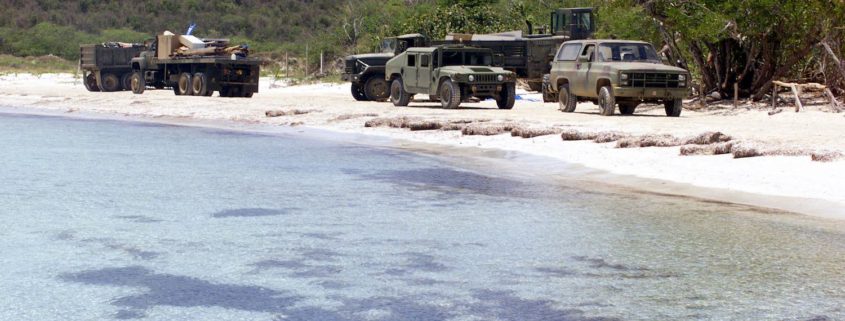
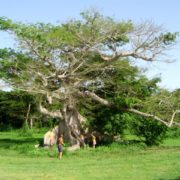


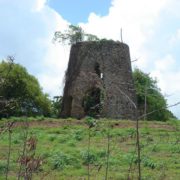
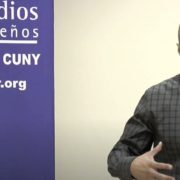
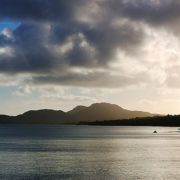
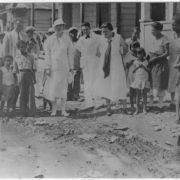
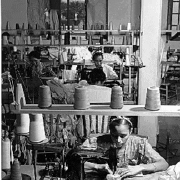


Leave a Reply
Want to join the discussion?Feel free to contribute!